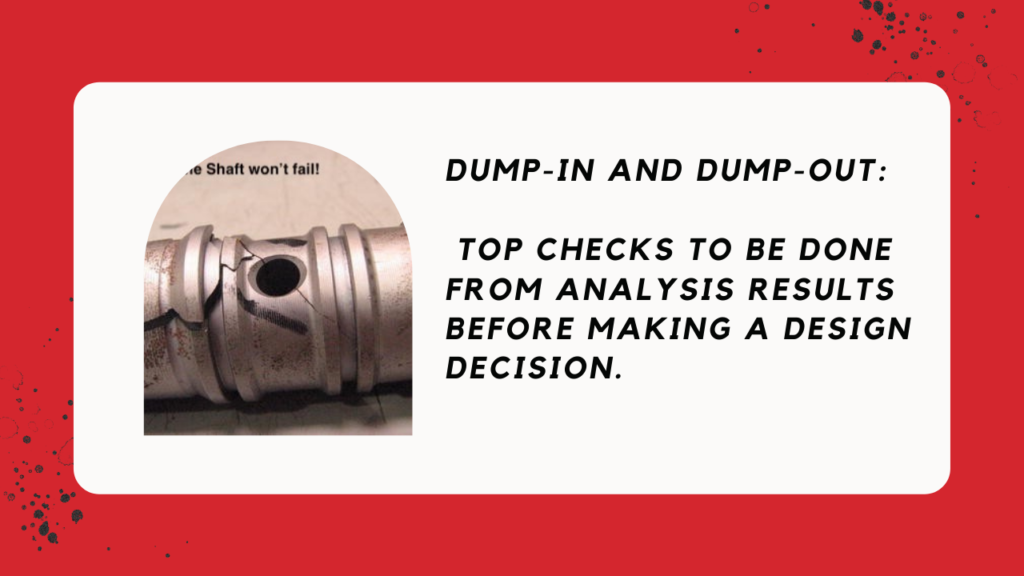Finite Element Analysis (FEA) is a very good tool for providing useful insight into stresses and deformations which in turn the engineer can assess the strength and durability of mechanical components and large structures. These days FEA tools are often integrated into the CAD platform which makes anyone and everyone without a working knowledge in FEA can perform complex analysis.
But by keeping in mind the few things can help you verify if the results are reliable to make the big change in design –

Most designers know how the component will look like under loading. Is the deformation happening in the right plane? Or is the deformation obtained is insanely high like 1 meter.
- Check Reaction forces:
Checking the reaction forces helps you to verify if the overall mass and loads assigned are correct. Do the reaction forces add up and makes sense, if yes – thumbs up!
- Check FEA software default settings:
Inorder to speed up the process, most FEA tools have automated contact surface detection algorithm. You have to verify if the settings assumed by the software are correct to what you are trying to simulate.
Always keep this in mind – the software only does what you tell it do. It does not know what you want it be.
- Singularity and Peak Stress values:
Often you see a very high stress a minuscule area, which is called a peak stress or stress singularity. These are generally due to mesh skewness and numerical errors. Such stresses cannot be taken at face value and should be ignored while you make decisions.
- Check for Errors and convergence issues:
Always check the errors tabs which shows any convergence or negative equation issues. You have to re-check the mesh or boundary conditions and re-run the simulation.
- Model Constraints:
Keep a check on how the model should be constrained. Is it constrained on the right planes and intended DOFs are restrained from movement. Often when constraints are not fixed manually, the software will end assuming its own.
- Wrong interpretation of Post-processed results:
Do not interpret Von-misses stress criterion and equivalent stress for casting and plastic parts. They are good for steels and other metals.
Conclusion :
Graphler Technology is one of the fastest-growing product design companies in India, focused on taking new product ideas right through to prototype development and manufacturing. We have created 100s of products right from scratch to production for clients worldwide. We have a team of experts specialized in 3D to 2D Conversion Services, CAD Conversion Services, Engineering Animation Services, Pressure Vessel Analysis Services, and more.
Contact our experts today to know about our services.


